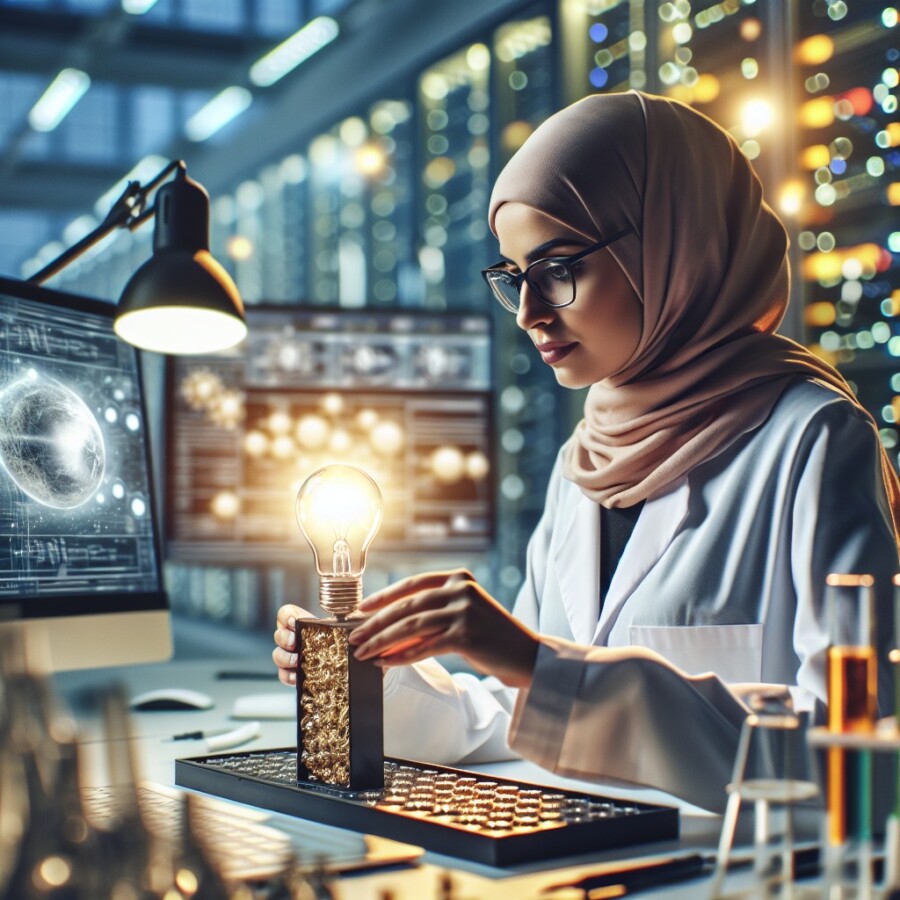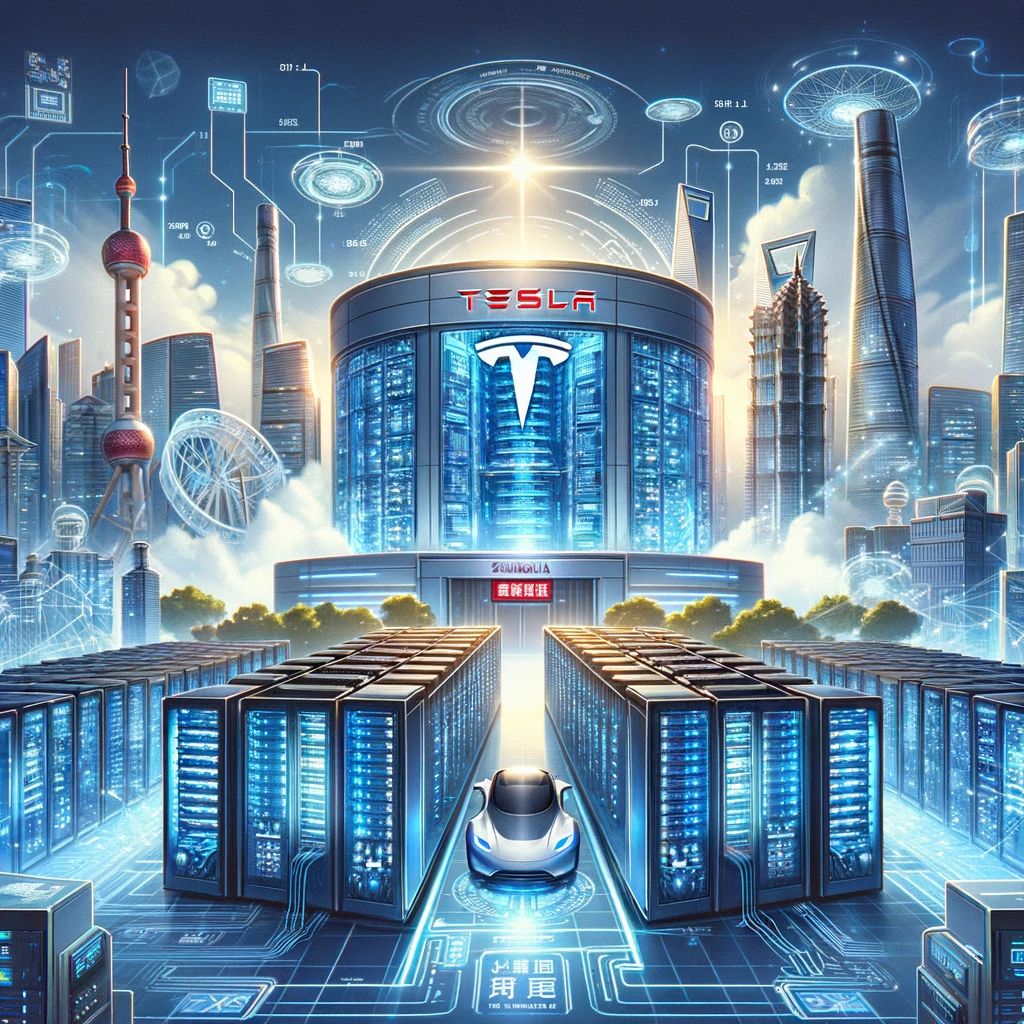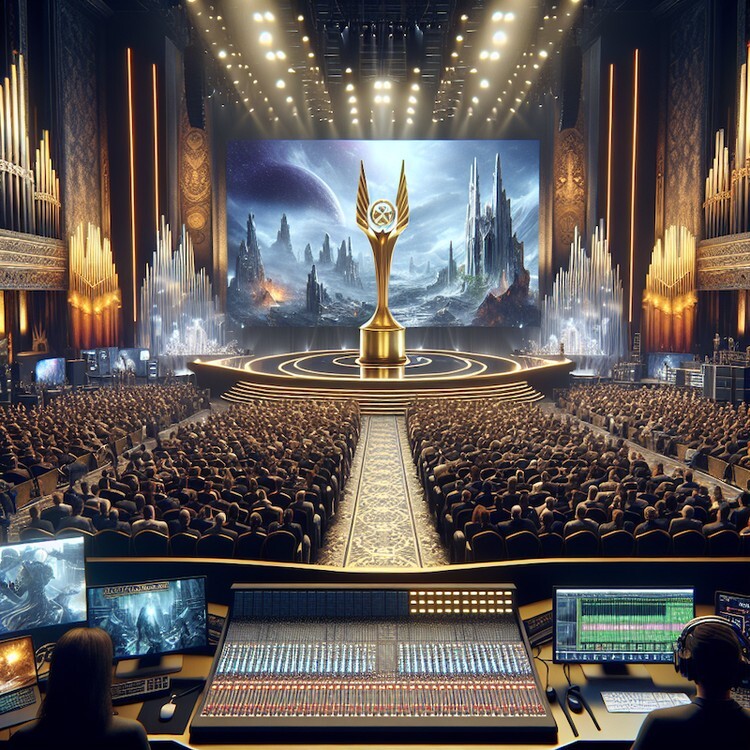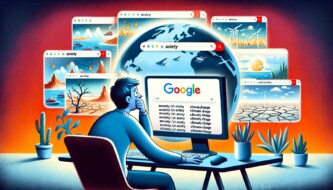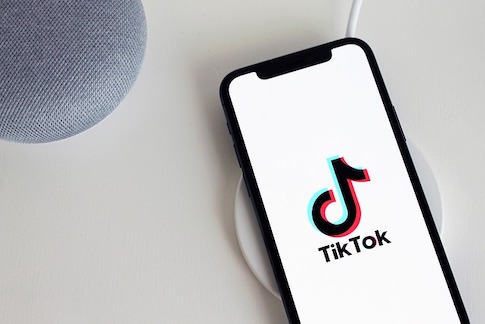Microsoft and the Pacific Northwest National Laboratory (PNNL) have found a new material using artificial intelligence (AI) and supercomputing that could reduce the amount of lithium used in batteries by up to 70%. They’ve already used this material to power a lightbulb. By using AI and supercomputers, Microsoft researchers were able to narrow down 32 million possible materials to 18 good candidates in less than a week. This would have taken over 20 years using traditional lab methods. It only took them nine months to create a working battery prototype. AI and high-performance computing are going to change the way we make scientific discoveries in the future.
Lithium is an important part of rechargeable batteries, like the ones in electric cars and smartphones. The demand for lithium is increasing, and by 2025, there might not be enough of it. Extracting lithium has a big impact on the environment and can take a long time. The new material made with AI, called N2116, is a solid-state electrolyte that has been tested and could be a sustainable energy storage solution. Solid-state batteries are safer than regular liquid or gel-like lithium batteries and can charge faster and hold more energy.
In the future, AI and supercomputing will be really important for battery researchers to find new materials that work well. But we have to be careful because sometimes the technology can give us wrong results or materials that can’t be made in the lab. The AI used by Microsoft is based on scientific data, so we can trust the information it gives us. Microsoft’s AI helped PNNL find a material that could be really good for batteries, and this shows how AI can speed up innovation in the battery industry.
Original news source: New material found by AI could reduce lithium use in batteries (BBC)
🎧 Listen:
Slow
Normal
Fast
📖 Vocabulary:
| 1 | artificial | Made by human skill or effort rather than coming from nature |
| 2 | supercomputing | Using very powerful computers to solve complex problems |
| 3 | prototype | An early model or version of a product that shows how it works |
| 4 | rechargeable | Able to be filled with power again after use |
| 5 | extracting | The process of removing something from where it is naturally found |
| 6 | sustainable | Able to be used without causing harm to the environment or depleting resources |
| 7 | solid-state | A type of technology where the parts are solid rather than liquid |
| 8 | electrolyte | A substance that allows electricity to flow through it |
| 9 | impact | The effect or influence something has on something else |
| 10 | innovation | The introduction of new ideas or methods |
| 11 | candidates | People or things that are considered for something, like a job or prize |
| 12 | traditional | The usual way of doing things, based on methods from the past |
| 13 | scientific | Relating to the systematic study of the structure and behavior of the physical and natural world |
| 14 | performance | How well something does its job or function |
| 15 | prototype | An early sample or model built to test a concept or process |
Group or Classroom Activities
Warm-up Activities:
– News Summary
Instructions: Divide the class into pairs or small groups. Give each group a copy of the article. Ask them to read the article and then write a summary of the key points. After a few minutes, have each group share their summary with the rest of the class.
– Vocabulary Pictionary
Instructions: Write some key vocabulary words from the article on the board. Divide the class into teams. One student from each team comes to the board and chooses a word. They must then draw a picture to represent that word, while their team tries to guess what it is. The first team to guess correctly earns a point.
– Pros and Cons
Instructions: Divide the class into pairs or small groups. Ask each group to discuss the pros and cons of using AI and supercomputing to find new battery materials. After a few minutes, have each group share their ideas with the rest of the class. Encourage a discussion and debate among the students.
– Future Predictions
Instructions: Ask the students to imagine what the future of battery technology could look like with the advancements in AI and supercomputing. Have them write down their predictions and then share them with a partner or small group. Afterward, have a class discussion where students can share their predictions with the rest of the class.
– Headline Creation
Instructions: Divide the class into pairs or small groups. Give each group a few minutes to come up with a catchy headline for the article. The headline should capture the main idea and be attention-grabbing. Afterward, have each group share their headline with the rest of the class. Consider having a class vote to determine the best headline.
🤔 Comprehension Questions:
1. How did Microsoft and the Pacific Northwest National Laboratory (PNNL) use artificial intelligence and supercomputing to find a new material?
2. What is the potential benefit of using this new material in batteries?
3. Why is lithium important in rechargeable batteries?
4. Why is there an increasing demand for lithium?
5. What are some advantages of solid-state batteries over liquid or gel-like lithium batteries?
6. How could AI and supercomputing change the way we make scientific discoveries?
7. What are some potential risks of using AI in the search for new materials?
8. How did Microsoft’s AI help PNNL in finding a material for batteries?
Go to answers ⇩
🎧✍️ Listen and Fill in the Gaps:
Microsoft and the Pacific (1)______ National Laboratory (PNNL) have found a new material using artificial intelligence (AI) and (2)______ that could reduce the amount of lithium used in (3)______ by up to 70%. They’ve already used this material to power a lightbulb. By using AI and supercomputers, Microsoft researchers were able to narrow down 32 million possible materials to 18 good (4)______ in less than a week. This would have taken over 20 years using traditional lab methods. It only took them nine months to create a working battery (5)______. AI and high-performance computing are going to change the way we make (6)______ discoveries in the future.
Lithium is an important part of rechargeable batteries, like the ones in electric cars and smartphones. The (7)______ for (8)______ is increasing, and by 2025, there might not be enough of it. Extracting lithium has a big impact on the environment and can take a long time. The new material made with AI, called (9)______, is a solid-state electrolyte that has been tested and could be a (10)______ energy storage solution. Solid-state batteries are (11)______ than (12)______ liquid or gel-like lithium batteries and can charge faster and hold more energy.
In the future, AI and supercomputing will be really important for battery researchers to find new (13)______ that work well. But we have to be careful because sometimes the technology can give us (14)______ results or materials that can’t be made in the lab. The AI used by Microsoft is based on scientific data, so we can trust the information it gives us. Microsoft’s AI helped PNNL find a material that could be really good for batteries, and this shows how AI can (15)______ up (16)______ in the battery industry.
Go to answers ⇩
💬 Discussion Questions:
Students can ask a partner these questions, or discuss them as a group.
1. What is artificial intelligence (AI) and how is it used in this article?
2. How would you feel if you could charge your smartphone in just a few minutes?
3. Do you think it’s important to find alternative materials for batteries? Why or why not?
4. What is a solid-state battery and why is it safer than other types of batteries?
5. How would you feel if there was a shortage of lithium in the future?
6. Do you think AI and supercomputing will play a big role in scientific discoveries in the future? Why or why not?
7. What is the impact of extracting lithium on the environment?
8. How would you feel if scientists were able to find a material that could replace lithium in batteries?
9. Do you like the idea of using AI to speed up innovation? Why or why not?
10. What is the difference between traditional lab methods and using AI and supercomputing?
11. How would you feel if you didn’t have to worry about your smartphone battery dying quickly?
12. Do you think it’s important to prioritize sustainable energy solutions? Why or why not?
13. What other areas do you think AI and supercomputing could be used to make scientific discoveries?
14. How would you feel if AI technology gave us wrong results or materials that couldn’t be made in the lab?
15. Do you think the use of AI in scientific research will continue to grow in the future? Why or why not?
Individual Activities
📖💭 Vocabulary Meanings:
Match each word to its meaning.
Words:
1. artificial
2. supercomputing
3. prototype
4. rechargeable
5. extracting
6. sustainable
7. solid-state
8. electrolyte
9. impact
10. innovation
11. candidates
12. traditional
13. scientific
14. performance
15. prototype
Meanings:
(A) The process of removing something from where it is naturally found
(B) An early model or version of a product that shows how it works
(C) A substance that allows electricity to flow through it
(D) Able to be filled with power again after use
(E) Using very powerful computers to solve complex problems
(F) Able to be used without causing harm to the environment or depleting resources
(G) People or things that are considered for something, like a job or prize
(H) Made by human skill or effort rather than coming from nature
(I) The introduction of new ideas or methods
(J) The usual way of doing things, based on methods from the past
(K) A type of technology where the parts are solid rather than liquid
(L) An early sample or model built to test a concept or process
(M) The effect or influence something has on something else
(N) Relating to the systematic study of the structure and behavior of the physical and natural world
(O) How well something does its job or function
Go to answers ⇩
🔡 Multiple Choice Questions:
1. How did Microsoft and PNNL use AI and supercomputing to find a new material for batteries?
(a) They tested 18 good candidates in a lab for over 20 years.
(b) They narrowed down 32 million possible materials to 18 good candidates in less than a week.
(c) They used traditional lab methods to find the material.
(d) They extracted lithium from the environment to create the material.
2. Why is lithium important in rechargeable batteries?
(a) It helps reduce the amount of energy needed to charge batteries.
(b) It is a sustainable energy storage solution.
(c) It makes batteries safer and easier to charge.
(d) It is a crucial component in electric cars and smartphones.
3. What is the advantage of using solid-state batteries?
(a) They are made with liquid or gel-like lithium.
(b) They have a smaller impact on the environment.
(c) They require less lithium to function.
(d) They are safer and can charge faster and hold more energy.
4. How long did it take Microsoft researchers to create a working battery prototype using the new material?
(a) Nine months.
(b) Over 20 years.
(c) Less than a week.
(d) They haven’t created a prototype yet.
5. What is one potential problem with using AI and supercomputing to find new materials?
(a) The process is too slow and inefficient.
(b) AI and supercomputing cannot handle the complexity of battery research.
(c) Sometimes the technology can give us wrong results or materials that can’t be made in the lab.
(d) The materials found are not sustainable or environmentally friendly.
6. What is the future role of AI and supercomputing in battery research?
(a) They will replace traditional lab methods completely.
(b) They will have no impact on battery research.
(c) They will be important for finding new materials that work well.
(d) They will only be used for testing existing materials.
7. What is the potential impact of the increasing demand for lithium?
(a) Extracting lithium will become faster and more efficient.
(b) There might not be enough lithium by 2025.
(c) The price of lithium will decrease.
(d) The environment will benefit from increased lithium extraction.
8. How did Microsoft’s AI help PNNL in finding a material for batteries?
(a) It helped narrow down the possibilities and find a good candidate.
(b) It extracted lithium from the environment.
(c) It created a working battery prototype.
(d) It tested 32 million possible materials in a lab.
Go to answers ⇩
🕵️ True or False Questions:
1. Extracting lithium has no impact on the environment and is a quick process.
2. By utilizing AI and supercomputers, Microsoft researchers were able to quickly narrow down millions of possible materials to just 18 promising candidates in less than a week.
3. This new material has already been used to power a lightbulb, demonstrating its potential effectiveness.
4. Traditionally, this process would have taken less than 20 years using laboratory methods.
5. The creation of a working battery prototype using the new material took more than nine months.
6. The new material, called N2116, is a solid-state electrolyte that has been tested and could provide a sustainable energy storage solution.
7. The demand for lithium, an important component of rechargeable batteries, is increasing, and by 2025, there may not be enough of it available.
8. Microsoft and the Pacific Northwest National Laboratory have not discovered a new material using artificial intelligence and supercomputing that could significantly reduce the amount of lithium used in batteries.
Go to answers ⇩
📝 Write a Summary:
Write a summary of this news article in two sentences.
Check your writing now with the best free AI for English writing!
Writing Questions:
Answer the following questions. Write as much as you can for each answer.
Check your answers with our free English writing assistant!
1. How did Microsoft and the Pacific Northwest National Laboratory (PNNL) use artificial intelligence (AI) and supercomputing to find a new material for batteries?
2. What is the benefit of using AI and supercomputers in the search for new battery materials?
3. Why is lithium an important component in rechargeable batteries?
4. What are the advantages of using the new material, N2116, in batteries?
5. How can AI and supercomputing help researchers in the battery industry speed up innovation?
✅ Answers
🤔✅ Comprehension Question Answers:
1. Microsoft and PNNL used artificial intelligence and supercomputing to find a new material by narrowing down 32 million possible materials to 18 good candidates in less than a week. This process would have taken over 20 years using traditional lab methods.
2. The potential benefit of using this new material in batteries is that it could reduce the amount of lithium used by up to 70%. This is important because the demand for lithium is increasing and there might not be enough of it by 2025. Additionally, the new material, called N2116, is a solid-state electrolyte that is safer, charges faster, and holds more energy than regular liquid or gel-like lithium batteries.
3. Lithium is important in rechargeable batteries because it helps store and release energy. It is a key component that allows the battery to be used over and over again.
4. The demand for lithium is increasing because it is used in rechargeable batteries for electric cars, smartphones, and other electronic devices. As more people switch to electric vehicles and rely on portable electronics, the need for lithium is growing.
5. Some advantages of solid-state batteries over liquid or gel-like lithium batteries are that they are safer, charge faster, and hold more energy. This makes them more efficient and reliable for use in various applications.
6. AI and supercomputing can change the way we make scientific discoveries by speeding up the research and development process. Instead of relying solely on traditional lab methods, researchers can use AI to analyze vast amounts of data and narrow down the best candidates for further testing. This saves time and resources, allowing for faster innovation and advancements in various fields.
7. Some potential risks of using AI in the search for new materials include the possibility of incorrect results or the discovery of materials that cannot be practically made in the lab. It is important to validate and verify the information provided by AI to ensure its accuracy and feasibility.
8. Microsoft’s AI helped PNNL in finding a material for batteries by analyzing scientific data and narrowing down millions of possibilities to 18 good candidates. This significantly reduced the time and effort required to find a suitable material, allowing for faster progress in battery research and development.
Go back to questions ⇧
🎧✍️✅ Listen and Fill in the Gaps Answers:
(1) Northwest
(2) supercomputing
(3) batteries
(4) candidates
(5) prototype
(6) scientific
(7) demand
(8) lithium
(9) N2116
(10) sustainable
(11) safer
(12) regular
(13) materials
(14) wrong
(15) speed
(16) innovation
Go back to questions ⇧
📖💭✅ Vocabulary Meanings Answers:
1. artificial
Answer: (H) Made by human skill or effort rather than coming from nature
2. supercomputing
Answer: (E) Using very powerful computers to solve complex problems
3. prototype
Answer: (B) An early model or version of a product that shows how it works
4. rechargeable
Answer: (D) Able to be filled with power again after use
5. extracting
Answer: (A) The process of removing something from where it is naturally found
6. sustainable
Answer: (F) Able to be used without causing harm to the environment or depleting resources
7. solid-state
Answer: (K) A type of technology where the parts are solid rather than liquid
8. electrolyte
Answer: (C) A substance that allows electricity to flow through it
9. impact
Answer: (M) The effect or influence something has on something else
10. innovation
Answer: (I) The introduction of new ideas or methods
11. candidates
Answer: (G) People or things that are considered for something, like a job or prize
12. traditional
Answer: (J) The usual way of doing things, based on methods from the past
13. scientific
Answer: (N) Relating to the systematic study of the structure and behavior of the physical and natural world
14. performance
Answer: (O) How well something does its job or function
15. prototype
Answer: (L) An early sample or model built to test a concept or process
Go back to questions ⇧
🔡✅ Multiple Choice Answers:
1. How did Microsoft and PNNL use AI and supercomputing to find a new material for batteries?
Answer: (b) They narrowed down 32 million possible materials to 18 good candidates in less than a week.
2. Why is lithium important in rechargeable batteries?
Answer: (d) It is a crucial component in electric cars and smartphones.
3. What is the advantage of using solid-state batteries?
Answer: (d) They are safer and can charge faster and hold more energy.
4. How long did it take Microsoft researchers to create a working battery prototype using the new material?
Answer: (a) Nine months.
5. What is one potential problem with using AI and supercomputing to find new materials?
Answer: (c) Sometimes the technology can give us wrong results or materials that can’t be made in the lab.
6. What is the future role of AI and supercomputing in battery research?
Answer: (c) They will be important for finding new materials that work well.
7. What is the potential impact of the increasing demand for lithium?
Answer: (b) There might not be enough lithium by 2025.
8. How did Microsoft’s AI help PNNL in finding a material for batteries?
Answer: (a) It helped narrow down the possibilities and find a good candidate.
Go back to questions ⇧
🕵️✅ True or False Answers:
1. Extracting lithium has no impact on the environment and is a quick process. (Answer: False)
2. By utilizing AI and supercomputers, Microsoft researchers were able to quickly narrow down millions of possible materials to just 18 promising candidates in less than a week. (Answer: True)
3. This new material has already been used to power a lightbulb, demonstrating its potential effectiveness. (Answer: True)
4. Traditionally, this process would have taken less than 20 years using laboratory methods. (Answer: False)
5. The creation of a working battery prototype using the new material took more than nine months. (Answer: False)
6. The new material, called N2116, is a solid-state electrolyte that has been tested and could provide a sustainable energy storage solution. (Answer: True)
7. The demand for lithium, an important component of rechargeable batteries, is increasing, and by 2025, there may not be enough of it available. (Answer: True)
8. Microsoft and the Pacific Northwest National Laboratory have not discovered a new material using artificial intelligence and supercomputing that could significantly reduce the amount of lithium used in batteries. (Answer: False)
Go back to questions ⇧



